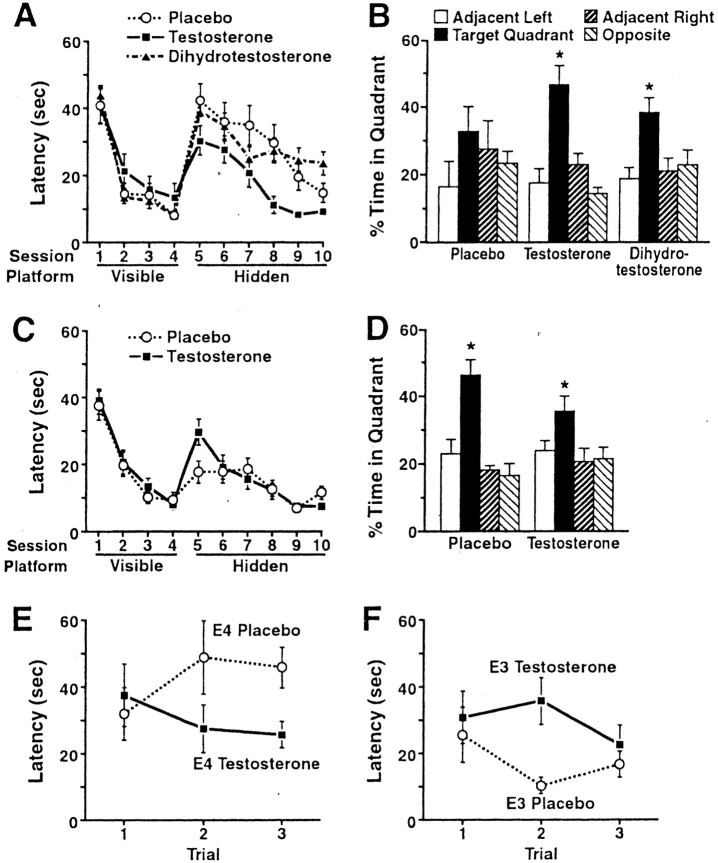Fig. 1.
ApoE4-induced deficits in spatial learning and memory can be improved by stimulating ARs. Six-month-old female NSE–apoE4 and NSE–apoE3 mice were tested in the water maze beginning 8 d after the subcutaneous implantation of testosterone, dihydrotestosterone, or placebo capsules (n = 5–11 mice per genotype and treatment). After the behavioral testing, plasma hormone levels were determined by radioimmunoassay to ensure the effectiveness of the implants (see Results). A, Testosterone improved spatial learning in female apoE4 mice. Although all three groups learned to locate the hidden platform, there was a significant difference between the learning curves of testosterone- and placebo-treated mice during the hidden-platform sessions (p < 0.05; repeated-measures ANOVA).B, In the probe trial (platform removed), both testosterone- and dihydrotestosterone-treated apoE4 mice, but not placebo-treated apoE4 mice, spent significantly more time searching in the target quadrant than in any of the other quadrants (*p < 0.05; Tukey–Kramer test). However, the dihydrotestosterone effect was relatively weak. Although the ratio of mice spending ≥35% versus <35% in the target quadrant was higher after testosterone (5:0) than after placebo (1:4) treatment (p < 0.01; χ2 test), it did not differ significantly from placebo after dihydrotestosterone treatment (5:4; p = 0.2; χ2 test). Learning curves calculated from distance moved were similar to those calculated from latencies (data not shown). C, D, Testosterone did not improve spatial learning and memory in female apoE3 mice. *p < 0.05 versus any other quadrant (Tukey–Kramer test). E, F, Trials 1–3 of the first hidden-platform session. Latency values for each session (A, C) represent the averages from three consecutive trials. Comparison of latencies in each of the first three hidden-platform trials by ANOVA revealed a significant interaction between treatment and genotype during trials 2 (p = 0.002) and 3 (p = 0.027) but not trial 1 (p = 0.95). Comparison of the four learning curves by repeated-measures ANOVA also identified a significant interaction between treatment and genotype (p = 0.028). Moreover, the effect of genotype was significant only in the placebo-treated groups (p = 0.002) but not in the testosterone-treated groups (p = 0.93).

